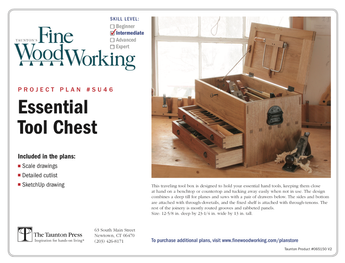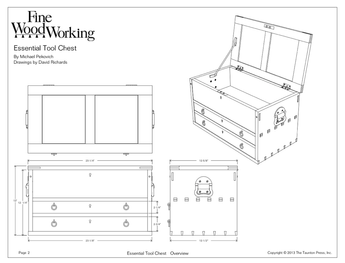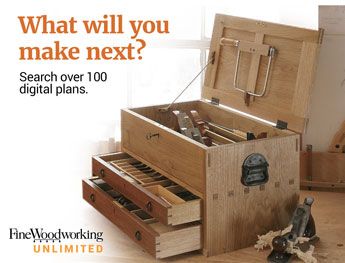Sketchup and Kitchen/Cabinet Design
SWMBO says that the following question is the kind only a moderately compulsive engineer could ask. So, you are forewarned. And if this is met by a great yawn and huge silence, I’ll know that I’ve written a book rather than asked a question!
Since my computer crashed and, joy of joy, my Norton Ghost backup proclaimed itself “…corrupted – therefore unusable, sorry…”, I get to do my kitchen design in overview and in detail all over again from scratch – a full year after I did it the first time and so, therefore, have forgotten just how I did it.
Since it took FOR EVER for me to do it the first time, I would like to know if the work plan that I’ve laid out for myself for doing it this second time makes sense, or is there an approach that is far more sensible.
Here’s my thoughts re approaching this the second time:
When I design a kitchen in Sketchup, it’s quick and easy to “block” out the overall outline, even to laying out the room to scale and then locating appliances, sinks, islands, and the overall cabinet layout for review with SWMBO. I’ve done that this second time, already. It’s being modified as we discuss what she wants.
I’d like to use the file of this “sketch” as my starting place for the detailed design, i.e, door and drawer design, faceframe design, moldings design and placement, etc.
Rather than start right in on top of that file, however, I suspect that it’s more efficient to merely print it out and use the ideas and dimensions we’ve agreed to, to manually build a complete new Sketchup design file. In the new file, I plan to do the detailed layout of each cabinet beside it’s neighbor, lay the faceframe and detail moldings over all, paint with materials, and show SWMBO a pretty close representation of what the completed kitchen will look like. Then I want to use it to create a materials and cut list.
So, with that lengthily preamble, here’s my planned approach to reduce workload and to end up with a cut list:
Cabinet sides:
It seems to me that since most of the wall cabinets (and separately, the base cabinets) will be built using the same size and shape sides, that I should design one side “component” for wall cabinets (and one for all base cabinets), and then just copy it as needed to form the sides of the individual cabinets, as I go.
Cabinet tops and bottoms:
It seems that the shape and depth of cabinet tops and bottoms won’t change, but that the widths will vary from cabinet to cabinet. So, I should make one each top, bottom, and back “component”, and then copy, make unique, and then stretch the width of each as needed to complete the design of each individual cabinet.
Complete cabinets:
I would then identify each cabinet (now each made up of a set of components) into separately named “groups”. (Would making each cabinet into a “component” made up of components work better?)
Is there a better design/layout sequence than the above that has been worked out by those of you who have done this before?
Of course, whatever design that I come up with will be extensively changed as it is reviewed with my “client”, so the above should lend itself to that reality.
Thoughts? Sage advice?
Your advice will be MUCH appreciated.
MikeD














Replies
Mike:
I am presently working through the design and construction of a kitchen using Sketchup.
For what it's worth here are my answers to your questions:
"I suspect that it's more efficient to merely print it out and use the ideas and dimensions we've agreed to, to manually build a complete new Sketchup design file."
I used my "boxes" as a guide for the detailed construction drawings; The two are so different that it's not worth the effort of adapting the first.
In my drawing I had to rework quite a lot because I didn't use "components" correctly. If you nest components it becomes hard to subsequently re-use and re-size them. I use components to describe each individual construction element, e.g., rail, stile, cabinet side, raised panel, etc. Once you have an element, such as a rail, you will use that component in pairs for the top and bottom using the "make unique" command as you re-use your original component. You can then group elements into a finished piece, e.g., the five elements that comprise a frame and panel door - do not under any circumstances make it a component. Grouping makes it easier to select and copy but it will have to be "exploded" to adapt for another cabinet. For base cabinets the stiles will likely be all the same while you use pairs of rails, each pair their own component, for the other cabinets.
This approach will give you a "measured drawing" but it is quite time consuming so you should have the basics agreed so that you are not altering this too much.
Hope this helps,
Hastings
Thanks, Hastings, that helps a lot! Mike
I think I missed answering a question or two.
Draw one base cabinet using components for each piece you would need to make in the shop. Mirror one of the side components so the inside faces face each other. Then make componets that vary in length from one cabinet to the next unique as needed. Don't make all of the components unique though.
Mike, if I was going to take the ideas and redraw the cabinets for construction drawings, I would do it in the exisiting model. It would actually save a lot of time because you can copy faces from the original and move those to the new one. Make components as you go to keep the elements separated. If you can stand to sit through it, I demonstrated that for a blog entry. It's a fairly long video but would give you the idea. I'll link to it if you want.
If you do go this route, just start your new cabinets in front of the original drawing at some easily remembered distance.
Save this file with a new name so you don't lose the original.
Dave
Hi Dave,
Yes, please. The link to your blog video would be great!
Thanks,
MikeD
Here you Mike. I hope it gives you some ideas.
Concept to Construction
Dave
I'm retired, but I do kitchen design and installations for fun and profit, and to keep busy. My degree was in structural engineering, but I am pleased to say that I forgot most of what I learned in engineering school.
I do my room models with all the cabinets, panels, etc., plus all the appliances, so that the Sketchup model can show the client a reasonable view of what the finished thing will look like.
Depending on how much detail they want, or how much rendering quality it may take to sell the job, I will or won't add things, or will or won't take the Sketchup file into a rendering engine for more photorealistic views.
But when it comes to building the package, I use the freeware program eCabinets, which produces output either for sending to a CNC, or for the kinds of optomized and diagrammed cutting lists used by a saw shop.
eCabs is a parameter-driven software package, in which you have the complete freedom to design your cabinetry details to exactly your own preferences, then build "seed" cabs to a useful width, height, and depth, for each of your types. Here is a typical seed cab description: sinkbase, one false drawerfront over two doors.
With seed cabs built and filed for all your types of cabs, a batch for a job is readily built, and as each cab type is added to the batch with the required quantity, the exact width x height x depth is keyed in, and eCabs "rebuilds" the cab from the seed, upsizing all parts or downsizing, as needed.
Because my work involves housebuilding and remodeling, I have been using Sketchup for that work also, and so the use of SU for kitchen work was a natural progression. Lately though, I have been feeling the need for more speed and horsepower in modeling and rendering, so I just received today, my copy of Chief Architect (a fully licensed used version 10), and will now embark up the learning curve.
View Image
"A stripe is just as real as a dadgummed flower."
Gene Davis 1920-1985
Here is an xray rendering in SU that shows a small tight kitchen. It is about as detailed as I want to get. Most times, the work is just done to do the massing, arrangement, and cab sizes and integration to appliances.
View Image
And here is a screencap of an exploded view of a base cabinet built using the eCabinets cabinet editor. This is frameless, but cabinets can be built faceframed, with any kind of arrangement of stretchers, joinery, etc. Being CNC cut, my parts all go together with blind dados.
View Image
View Image
"A stripe is just as real as a dadgummed flower."
Gene Davis 1920-1985
Cool!
Thanks for all the information, Gene.
Mike
This forum post is now archived. Commenting has been disabled